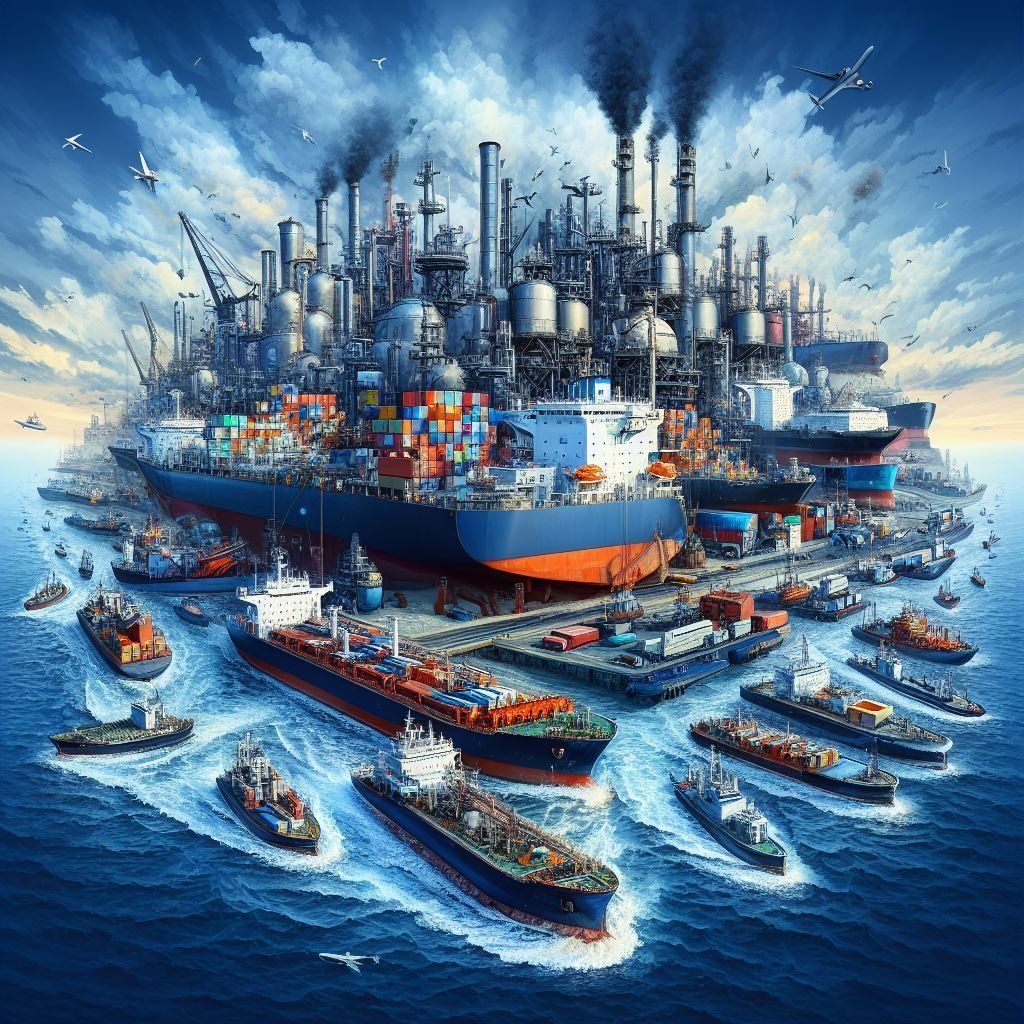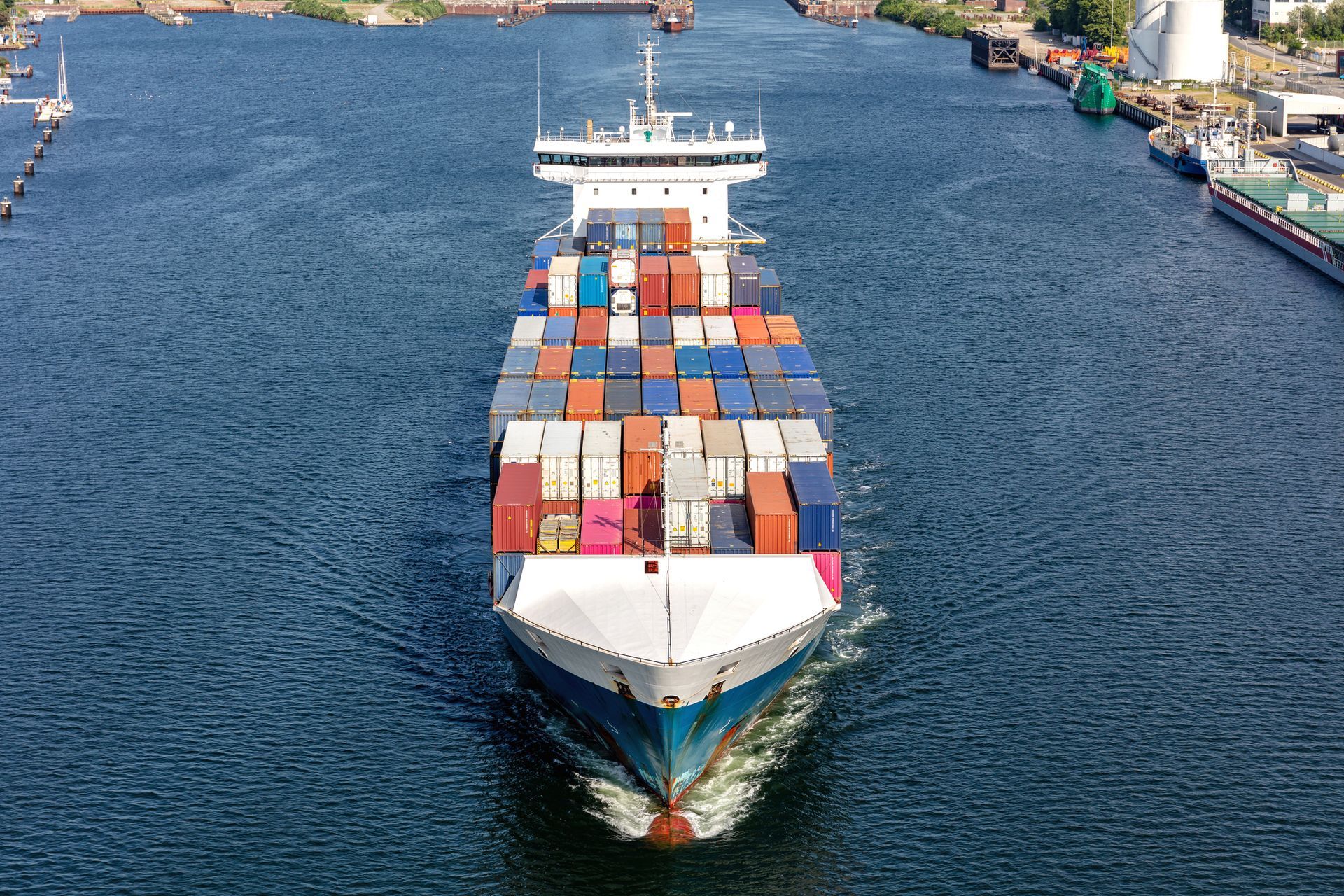
As we venture into the vast ocean of international trade, we face a crucial decision: the types of maritime transport. The complexity of this mode is revealed in different vessels, each designed to meet specific needs.
Imagine the diversity of cargo navigating the oceans, reflected in the various types of ships.
In this article, we will dive deep into understanding these vessels, exploring their unique characteristics. From the imposing oil tankers to the versatile container ships, each plays an essential role in the global maritime transport landscape.
Types of maritime transport: get to know them.
Maritime transport is that carried out via the sea. However, when questioning the types of maritime transport, people often confuse it with the types of transport that occur via waterways, namely: maritime, fluvial (by rivers), and lacustrine (by lakes).
With regard to maritime transport specifically, we encounter a fundamental dichotomy: passenger maritime transport and cargo maritime transport. This division outlines the distinct purposes and operational nuances that characterize each of these modalities.
In the case of passenger transport, the primary focus is on the experience of travelers, through majestic cruises, luxurious trips, exotic destinations, and a wide range of services and entertainment on board.
In contrast, cargo transport is the backbone of global trade, moving massive volumes of goods between continents and countries. This modality stands out for its logistical efficiency and its capacity to handle large volumes, significantly contributing to international supply chains.
What are the types of ships in maritime transport?
To understand the complexity of the maritime modal, it is essential to explore the main types of cargo ships, each catering to specific needs and reflecting the diversity of goods moving across the world's oceans. Below, we highlight some of the main types of cargo ships:
1. Oil tankers
Specialized in transporting crude oil and derivatives, these vessels can carry more than 300,000 liters. Internally, they have a complex system of interconnected pipes to balance the distribution of the liquids transported.
With an average crew of approximately 25 people, oil tankers have distinctive features such as greater width and shallower draft, making them suitable for navigating in shallower waters.
For environmental safety reasons, they are built with a double hull, providing an additional layer of protection against oil spills at sea.
2. Gas carriers
Designed for the transportation of liquefied gases such as LNG, LPG, ammonia, ethylene, and propylene, these ships have rounded tanks visible above the main deck. They play a crucial role in the safe movement of volatile substances, ensuring the efficiency and integrity of the transported cargo.
3. Bulk carriers
Designed for the transportation of bulk goods, such as grains, minerals, and coal, bulk carriers feature a rectangular deck, facilitating the efficient movement of these materials. They are ideal for products that do not require exact counting, specific packaging, or brand identification.
4. Reefer ships
Equipped with refrigeration systems in their holds, reefer ships are essential for transporting perishable cargoes, such as proteins and materials that require precise temperature control, including vaccines. They play a vital role in preserving the quality of products during the maritime journey.
5. Container ships
Specialized in the transportation of containerized cargo, container ships are designed in two models: flush deck or cellular. Equipped with cranes or operating with shore-based gantry cranes at port terminals, these vessels are essential for global trade.
Modern models include connections for refrigerated containers, allowing for the efficient transport of perishable goods.
6. Live cattle ships
Used for transporting live animals, such as cattle, pigs, and horses, these ships are designed with individual cells and compartmentalized like pens. They ensure suitable conditions for the humane transport of animals, adhering to animal welfare standards and international regulations.
Main maritime transport ports in Brazil
Brazil is home to an extensive list of ports, but we highlight the 10 most relevant ports for import and export, providing a concise overview of their importance in the national maritime landscape:
Port of Santos
- Main center of international maritime trade in Brazil.
- Handles approximately 4.1 million TEUs annually.
- Leads in tonnage and volume of containers transported.
- In 2021, recorded a movement of $62.8 billion in imports and $72 million in exports.
Port of Paranaguá:
- Inaugurated in 1853, it stands out as one of the largest ports in Brazil.
- The Container Terminal is the largest in South America.
- In 2021, it handled $16.3 billion in imports and $19.8 billion in exports.
Portonave (Port of Navegantes)
- First private container terminal in Brazil, began operations in 2007.
- It has a static storage capacity of 30,000 TEUs.
- In 2021, it was the second largest port in Brazil in terms of transaction values, moving $16.3 billion in imports and $19.8 billion in exports.
Port of Rio de Janeiro:
- Inaugurated in 1910, it stands out for its tradition and modernity.
- In 2021, it recorded a movement of $10 billion in imports and $6 billion in exports.
Port of Manaus
- The largest river port in the world, focused on electronic products and appliances.
- In 2021, it moved over $6 billion in imports and $2 billion in exports.
Port of Itapoá
- Inaugurated in 2011, it stands out for its modernization and efficiency.
- It has the capacity to handle up to 1.2 million TEUs.
- In 2021, it moved over $10 billion in imports and $7 billion in exports.
Port of Vitória
- Established in the 19th century, it is crucial for the flow of agricultural production.
- In 2021, it ranked 5th in exports, moving $18.6 billion.
Port of Suape
- It stands out as the main port in the Northeast region.
- In 2021, it moved $5.7 billion in imports and $1.7 billion in exports.
Port of Rio Grande
- Known as the "Mercosur Port," it is strategic for exports.
- In 2021, it registered $5.4 billion in imports and $15 billion in exports.
Port of Itajaí
- The second largest in area in Brazil. It integrates the port structure of Santa Catarina.
- In 2021, it ranked 5th in imports, handling nearly $13 billion, and 7th in exports, with $8.7 billion.
These ports play vital roles in Brazilian maritime trade, connecting the country to the global landscape and boosting the national economy.
What is the best option for importing or exporting through maritime modal?
When choosing maritime transport for import or export, a crucial decision arises: whether to opt for LCL or FCL. Both have their advantages and are suitable for different logistical needs. Let’s explore the characteristics of each option to assist in making the most efficient choice.
LCL transport is ideal when the cargo does not occupy the full capacity of a container. Here are some points to consider:
> Cost: It is an economical option for smaller shipments, as you only pay for the space used in the shared container.
> Flexibility: It allows for sending smaller volumes, providing flexibility for companies with variable demands.
> Frequency: It offers frequent departure options, which can be beneficial for small businesses with regular shipping needs.
> Increased cargo handling: Sharing the container means greater handling of the cargo, increasing the risk of damage.
FCL transport is the right choice when the cargo occupies the full capacity of a container. Here are some points to consider:
> Space efficiency: The space is entirely dedicated to your cargo, minimizing the risk of damage and providing greater control.
> Transit time: It typically has faster transit times since there are no additional stops for loading and unloading the container.
Choose LCL if your cargo is smaller and does not occupy the full capacity of a container. Also, if you seek scheduling flexibility and cost is a decisive factor for your company.
On the other hand, opt for FCL if your cargo occupies the full capacity of a container or if minimizing cargo handling is a priority for you.
Ultimately, the choice between LCL and FCL depends on the specific characteristics of your cargo, budget, and timeline. Carefully evaluating these factors will allow for an informed decision, optimizing costs and ensuring the efficient delivery of your goods in the international market.
Did you like our material? Then continue to understand the topic and explore the work of an NVOCC in LCL shipping.
Continue browsing the Allink blog

Stay informed about foreign trade
Subscribe to our newsletter and receive free weekly updates about the world of logistics.





